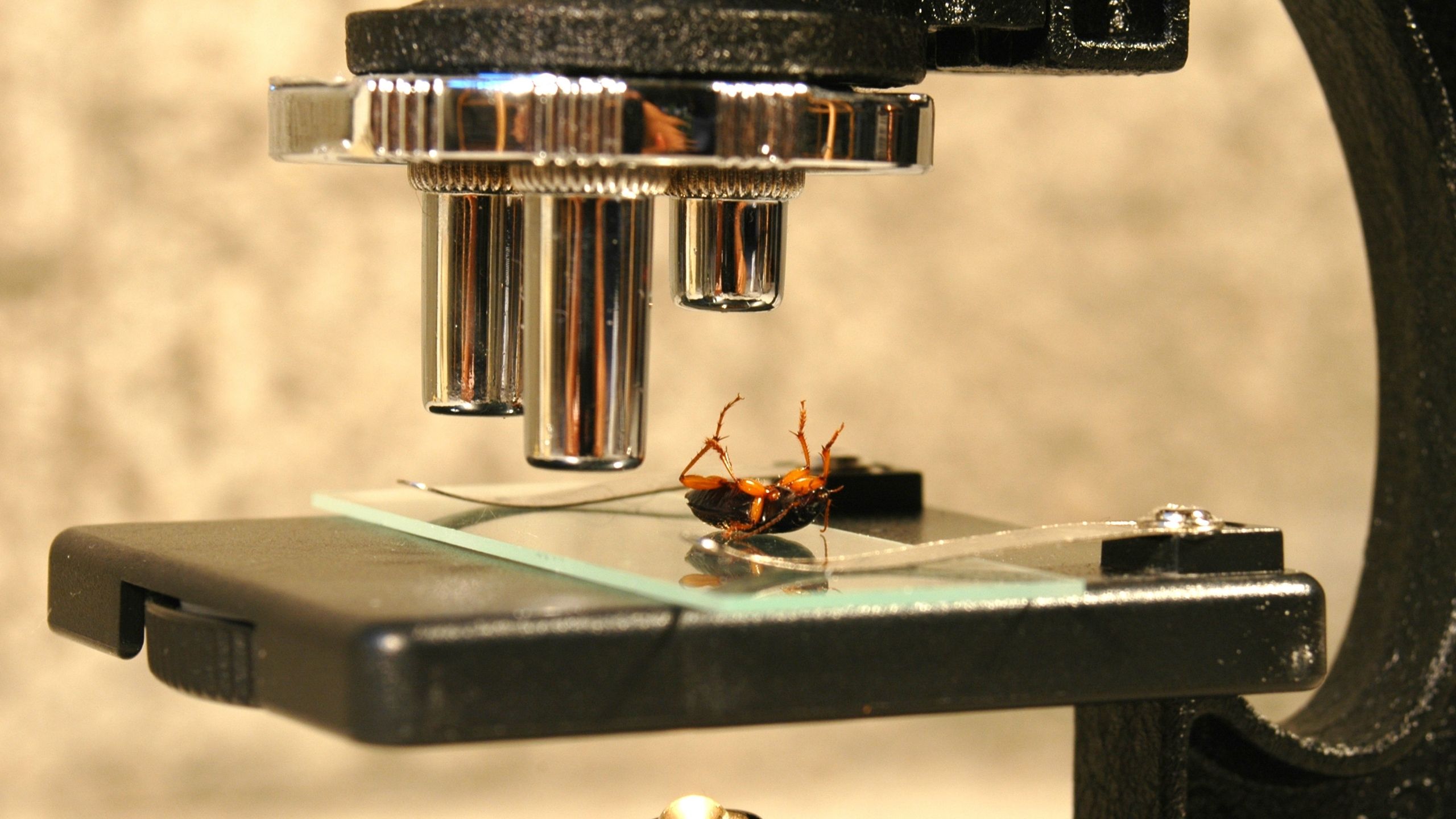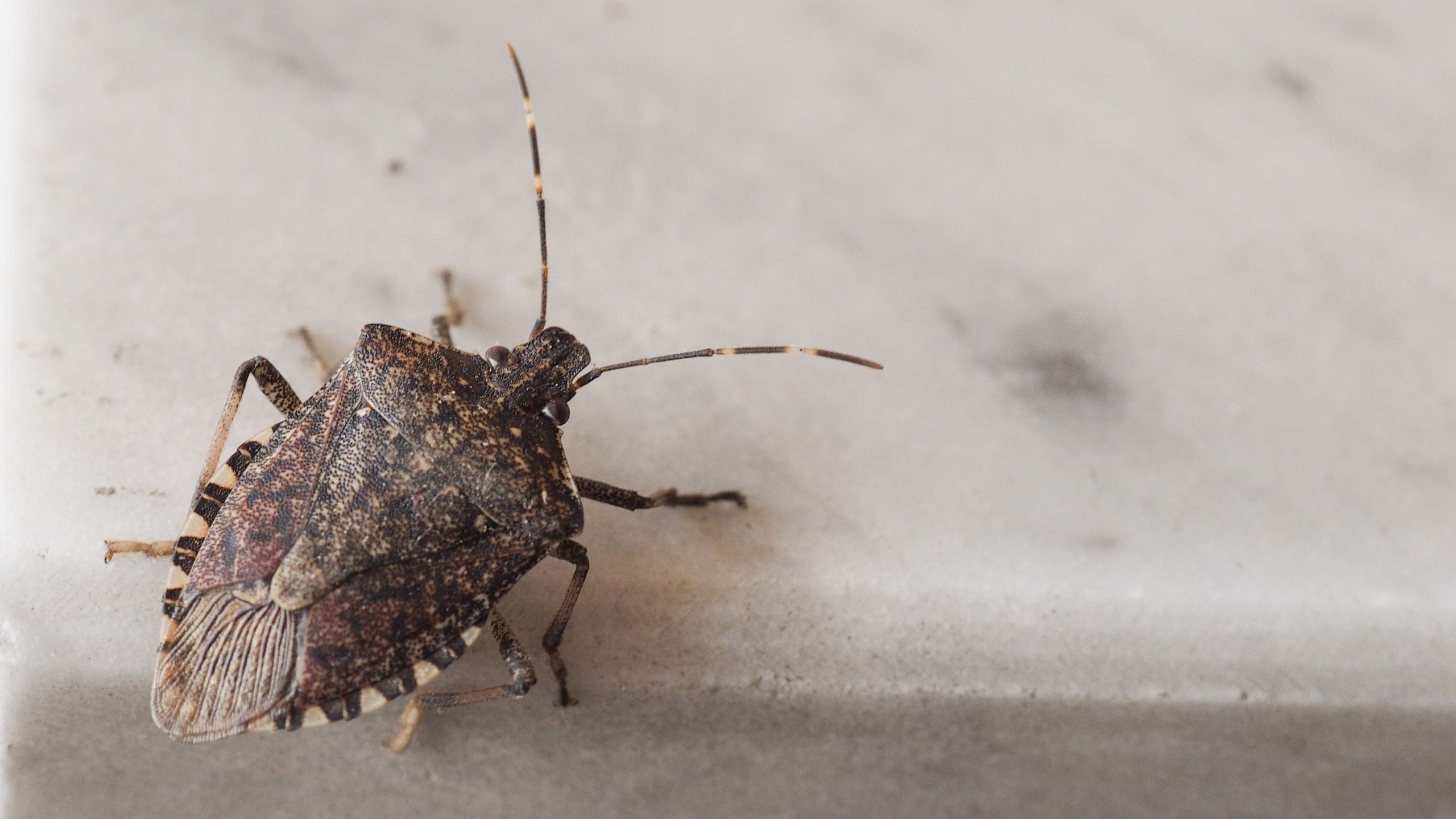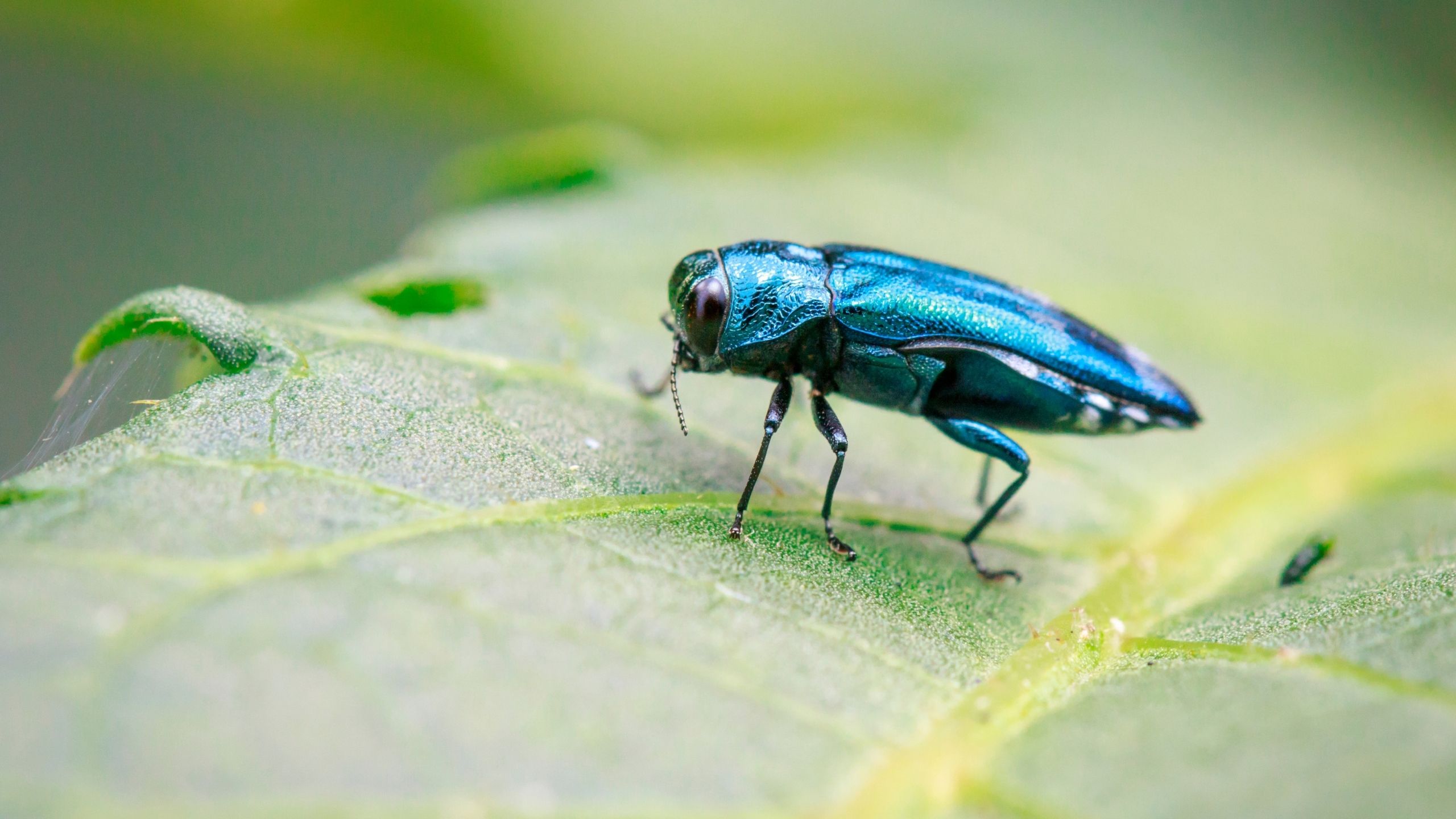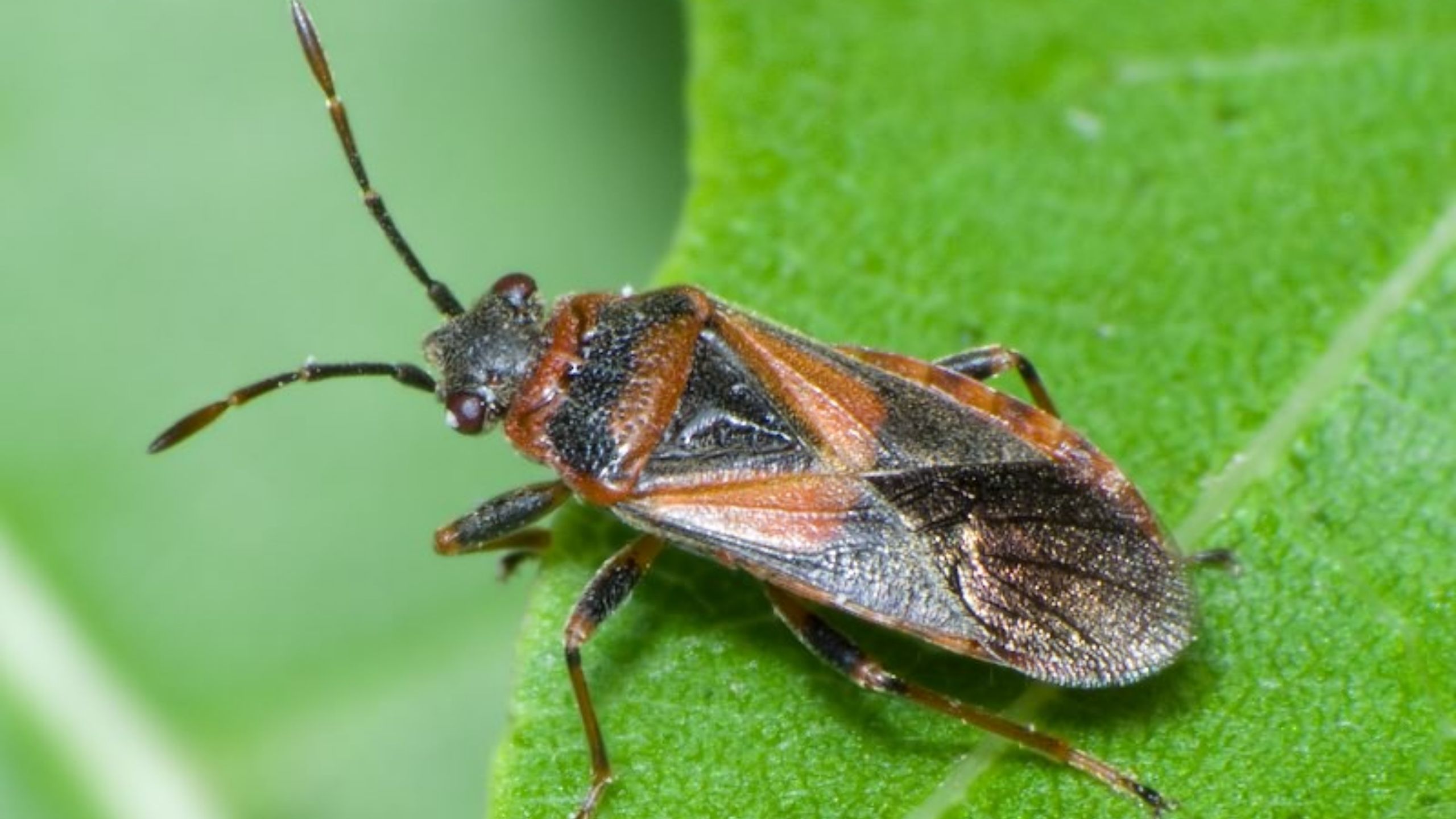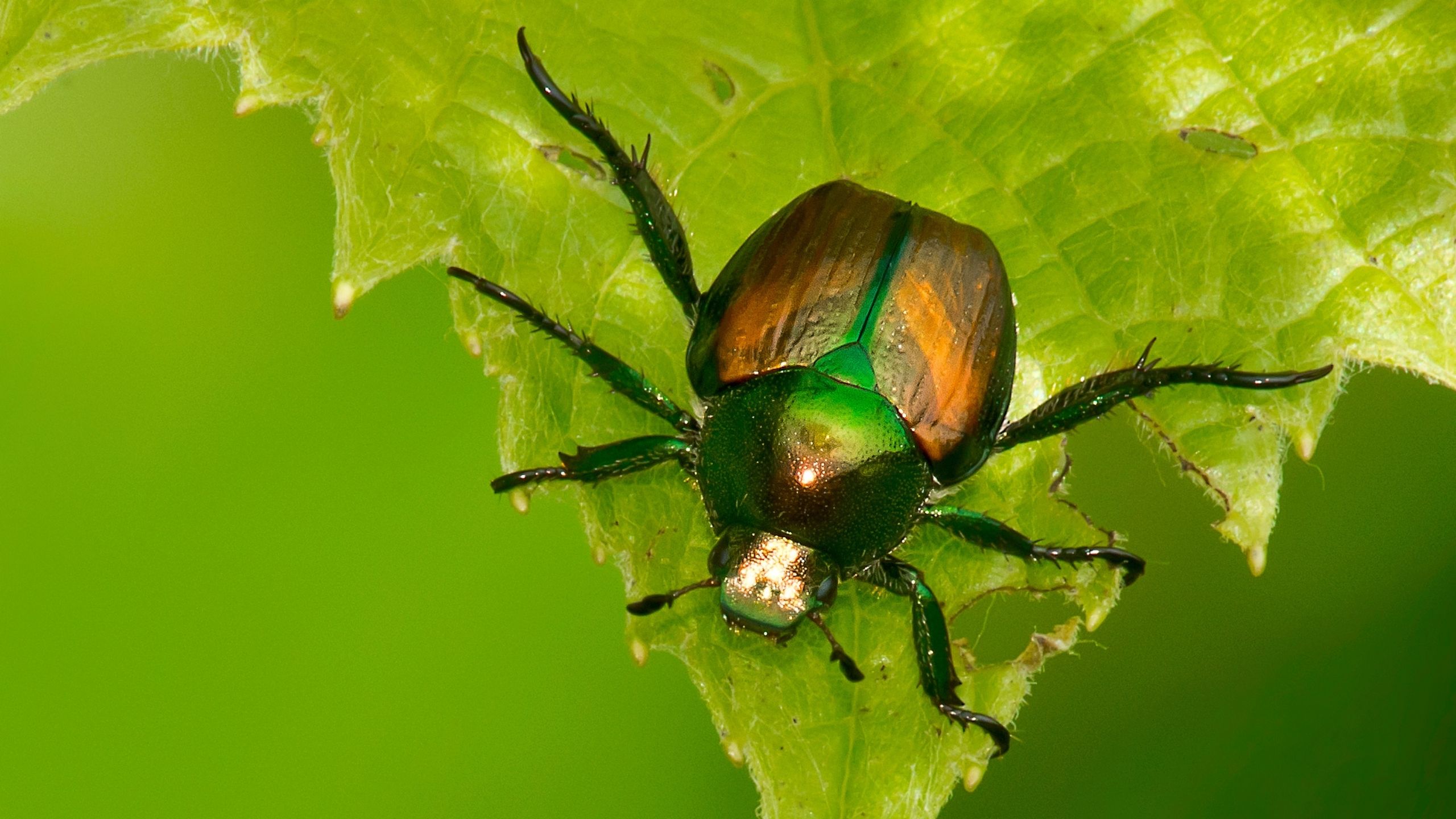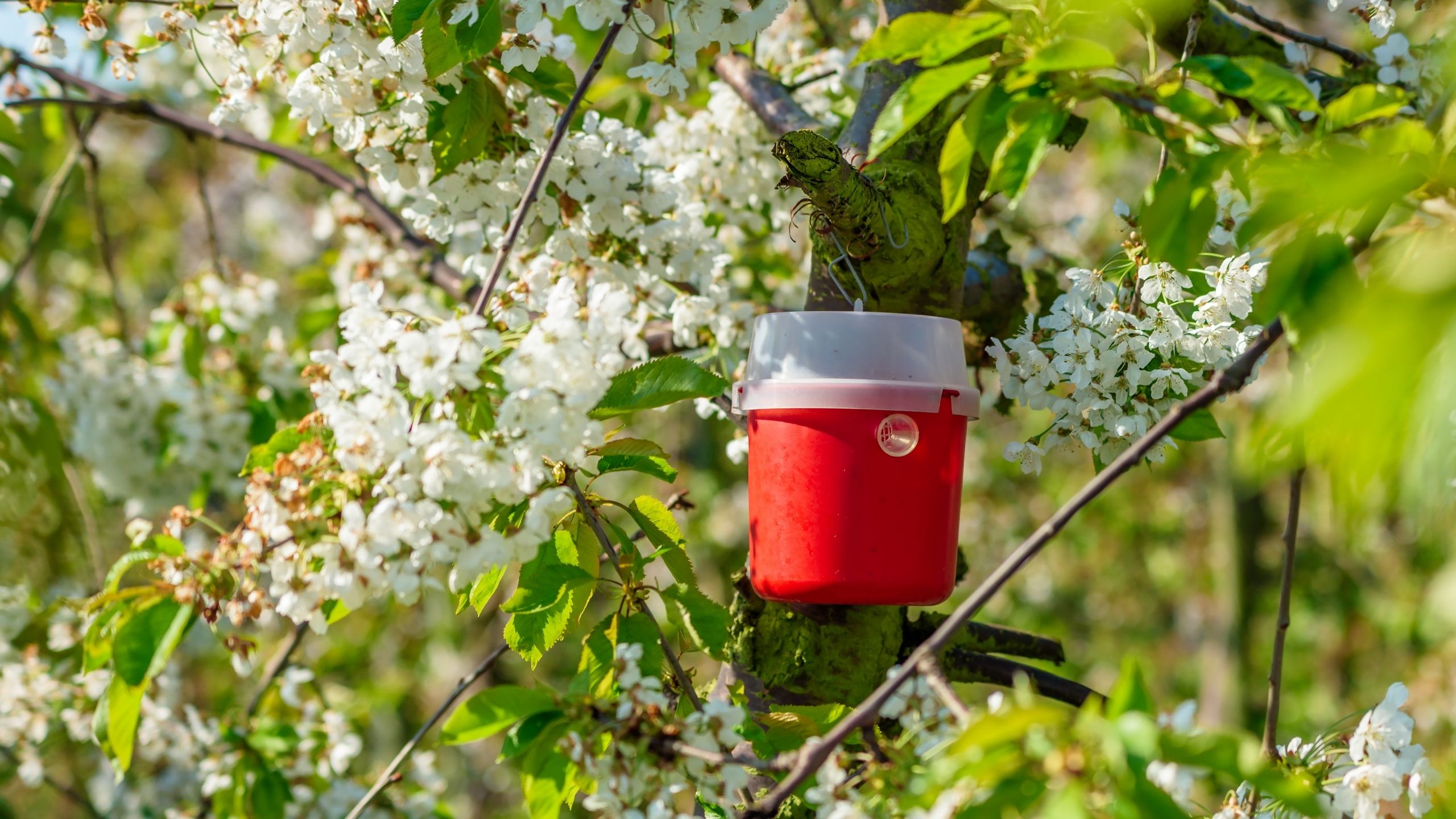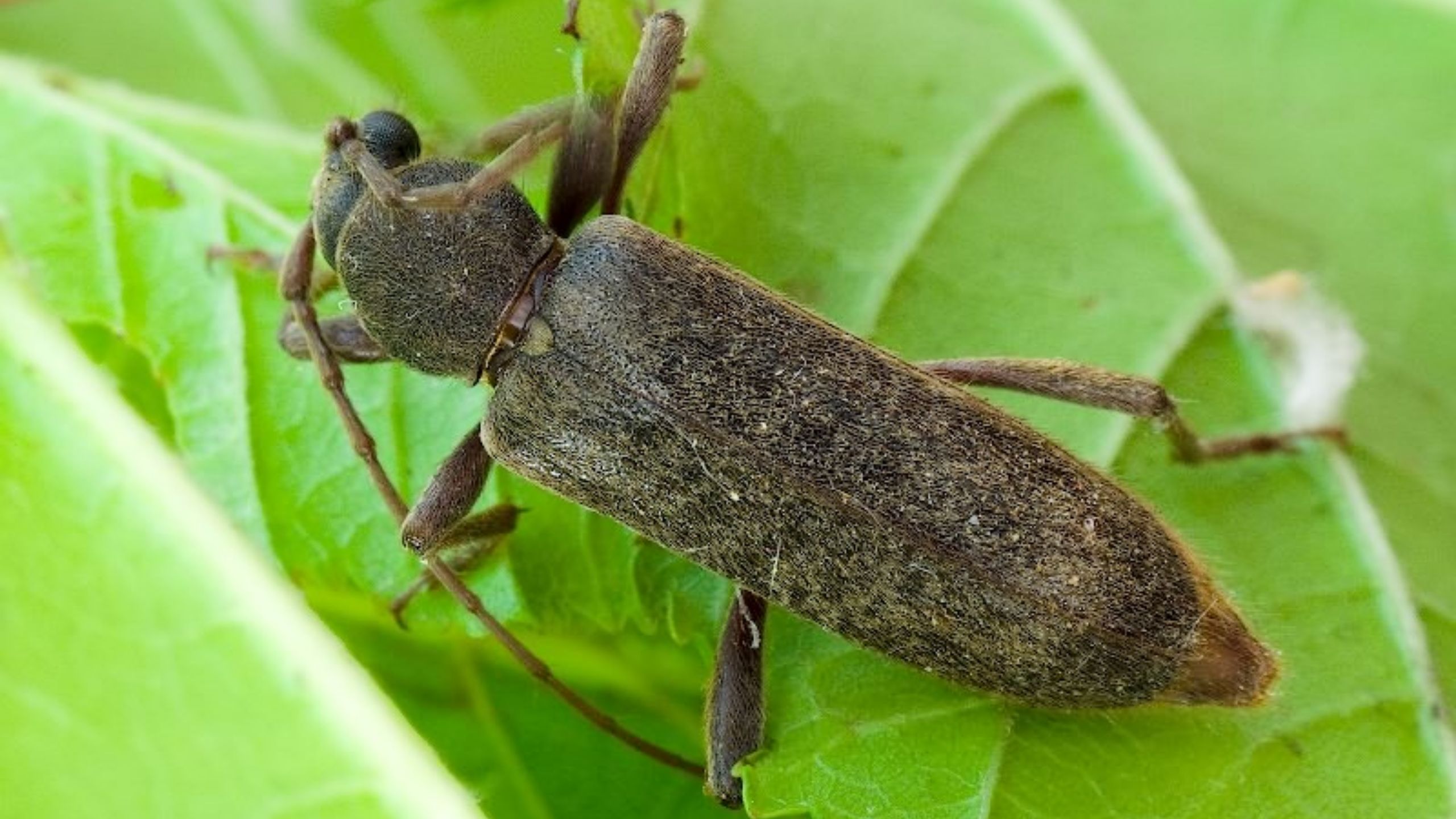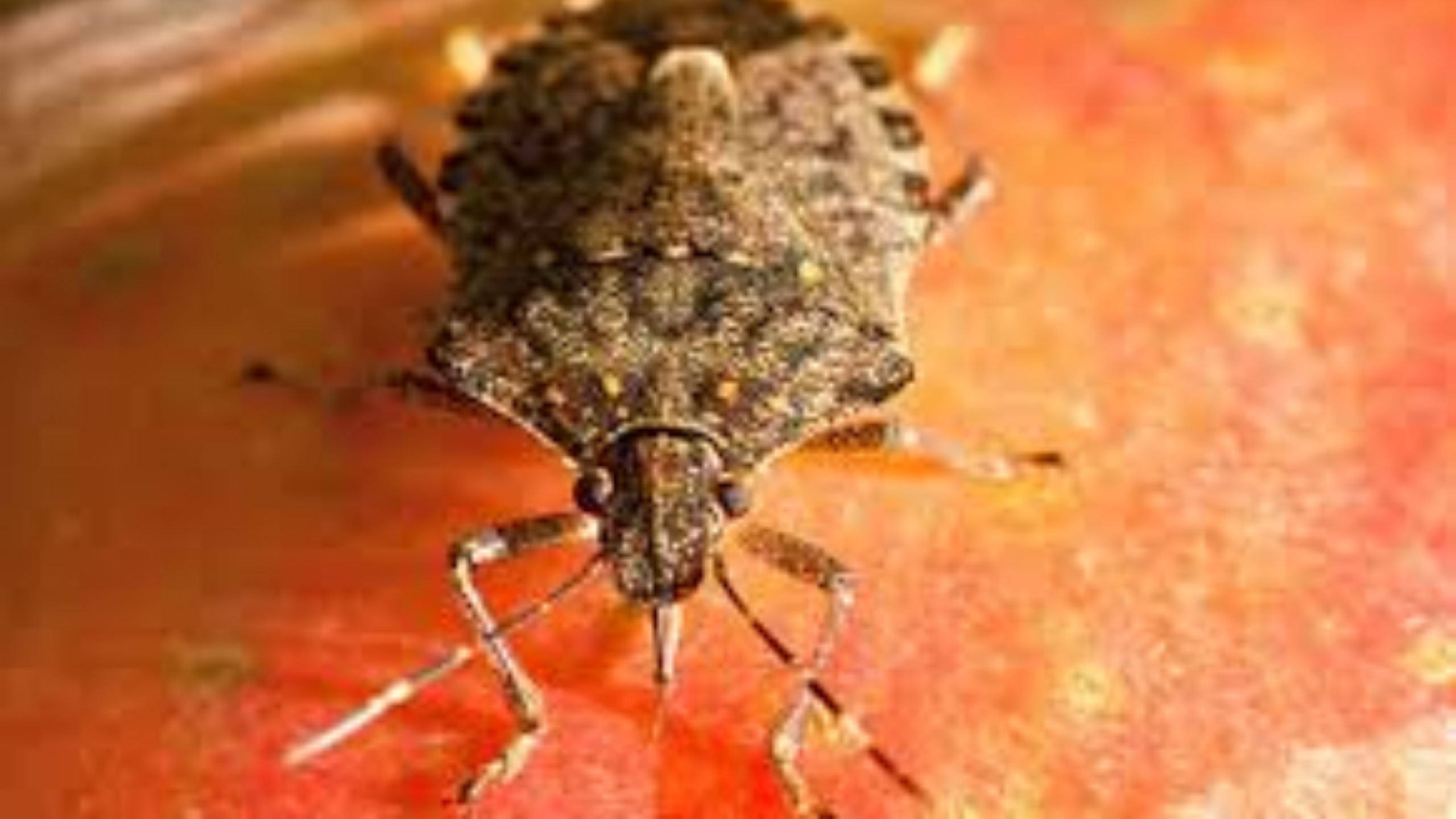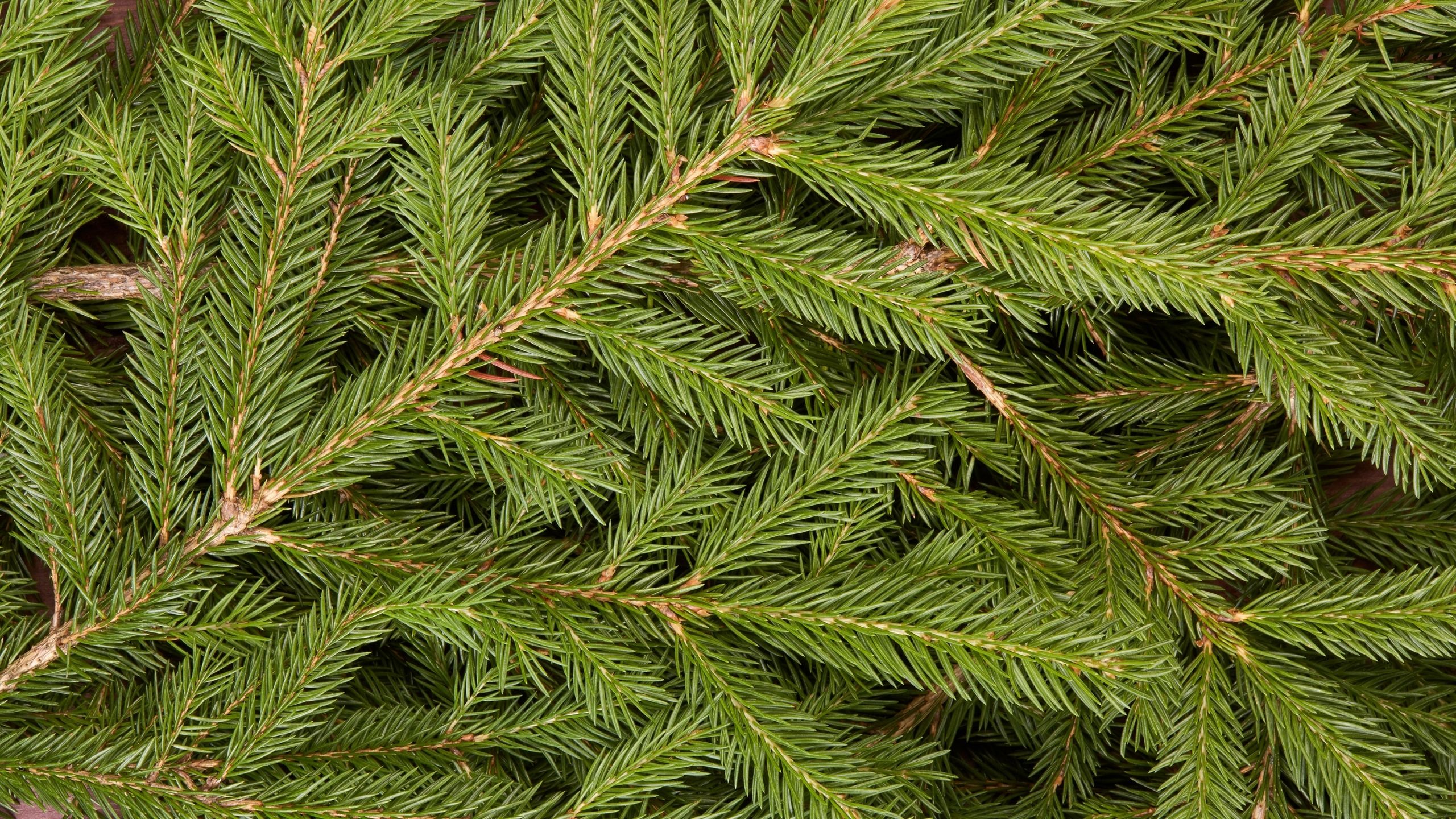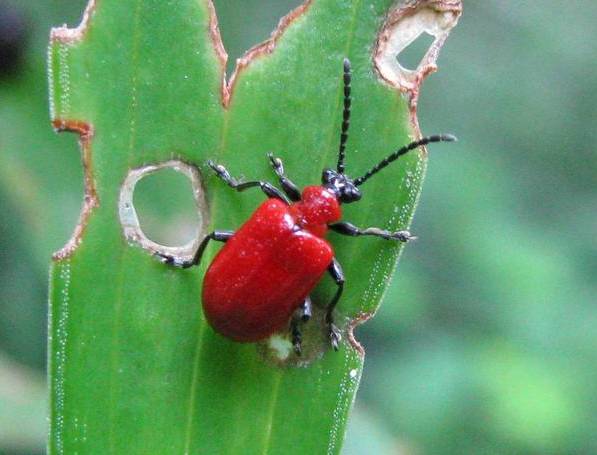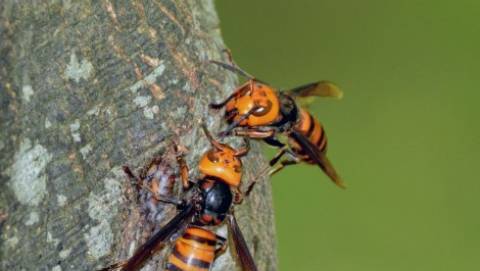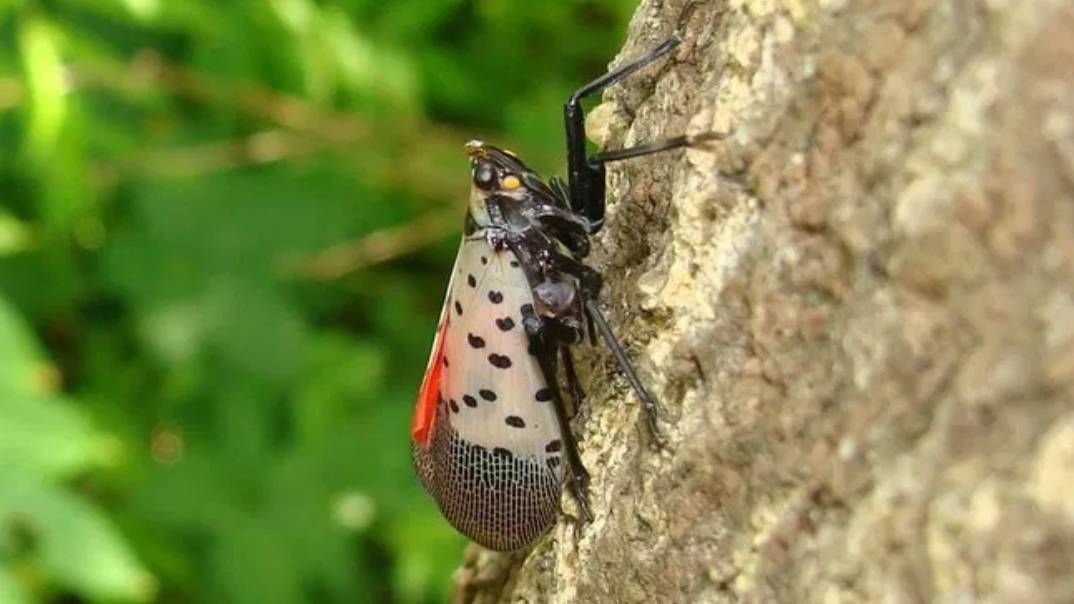Monitoring for Spotted Wing Drosophila in Utah
[Drosophila suzukii (Matsumura)]
January 2012
Cory A. Stanley, Extension Entomologist (No longer at USU)
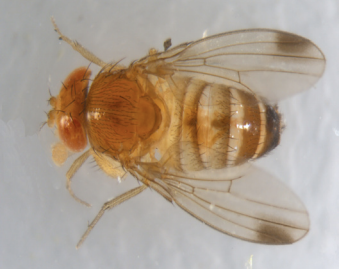
Quick Facts
- Spotted wing drosophila (SWD) is an non-native vinegar fly that was first detected in Utah in 2010.
- SWD attacks a broad range of fruits, including tree fruits, berries, vegetables, and ornamentals.
- SWD can infest unripe, ripe, over-ripe, and spoiled fruits.
- Detection and monitoring are crucial first steps for management of SWD.
- Because the fly is not widespread in the state, the identification of suspect SWD flies should be verified by the Utah Plant Pest Diagnostic Lab (UPPDL).
Spotted wing drosophila (SWD) (Drosophila suzukii) is a new fruit pest first introduced to the United States in 2008. SWD was detected in Davis County, Utah in 2010. SWD is similar to other vinegar flies (genus Drosophila), except they can infest unripe fruit. Males are easily identified by the single spot found on each wing (Fig. 1). Females are identified by the presence of a distinctly serrated ovipositor (egg laying structure), which may be difficult to see without the aid of a hand lens or microscope (Fig. 2)
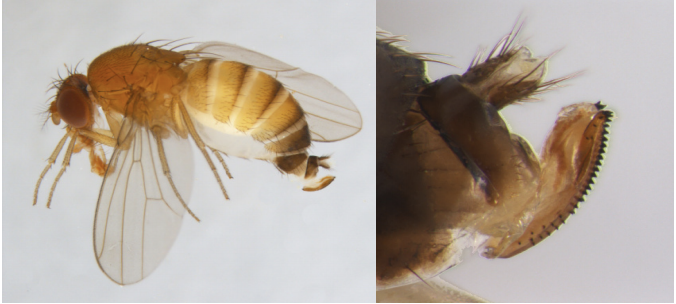
Fig. 2 Left: Female spotted wing drosophila; note the absence of spots on the wings and presence of the serrated ovipositor. Right: Close-up of the serrated ovipositor.
Monitoring is a crucial first step for management of SWD. Suspected SWD caught in monitoring traps can be sent to the UPPDL for identification before applying an insecticide.
When to Monitor
Spotted wing drosophila can attack fruit as soon as it begins to ripen, so that is when monitoring should begin. For example, place a trap in a cherry tree when the fruits begin to turn pink (Fig. 3). Continue trapping for at least two weeks after harvest. Because SWD can lay eggs in fruit on the ground, you will want to clean up as much fallen fruit as possible. As long as fruit is available, either on the tree or on the ground, monitoring is necessary, at least until temperatures consistently drop below freezing. The optimal number of traps has yet to be determined. Currently a minimum of one trap per residential yard or one trap per 5 acre commercial block is recommended.

Fig. 3 SWD trap containing about 2” of lure, hung in a shady area within a cherry tree just as the fruit is beginning to ripen.
Monitoring Steps
Step 1: Make Traps
Traps are easily made. Homemade traps have been proven more effective than commercially available traps that are currently on the market.
- For each trap you will need a 16-32 oz. plastic container with a securely fitting lid (Fig. 4). Empty food jars work well.
- Drill at least twelve 3/16” holes in the lid; ten holes for fly entry, two holes for hanging the trap (Fig. 5).
- Attach the rain guard and hanger (Fig. 6). A sturdy plastic plate or the peaked top of an insect trap makes a good ‘roof’ so that rain does not get into the trap. Drill or punch a hole in either side of the rain guard. Run a thick string through the holes in the rain guard. Tie knots in the string right below the holes to hold the rain guard in place. Run the string through the holes in the lid.
- Red, orange, or black traps are more attractive than clear traps. If your container is clear, consider a colored lid, a colored rain guard, and/ or adding a strip of colored tape. Also, clearly label each trap so if you are collecting multiple samples, they do not get mixed up (Fig. 3).
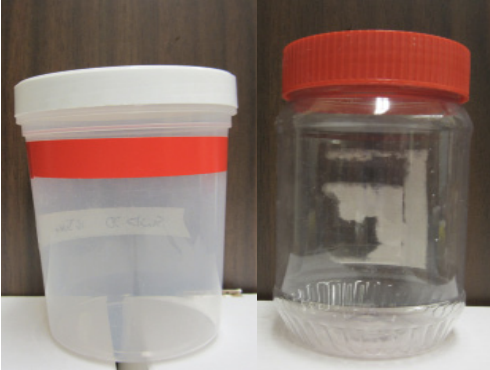
Fig. 4 Plastic jars make good SWD traps.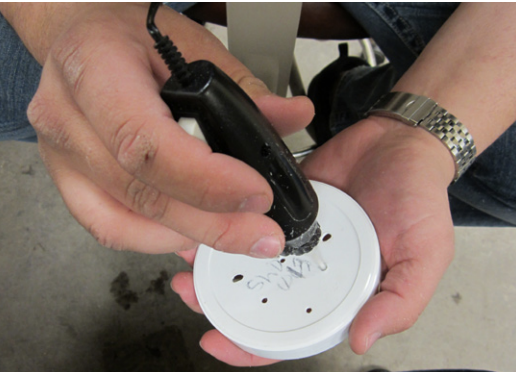
Fig. 5 Using a rotary tool to drill holes into the lid.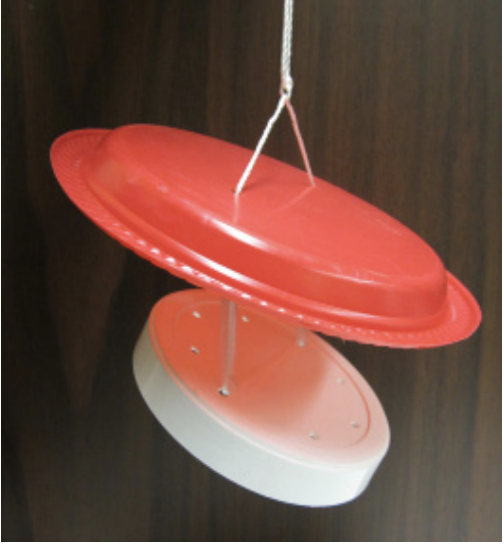
Fig. 6 Example of rain guard attached to lid. Plastic straw spacers between them are optional.
Step 2: Add Lure
SWD lure is a yeast/sugar solution that is easily made at home (Fig. 7). To make enough for 2-3 traps, mix:
- 0.25 oz yeast (one package)
- 4 teaspoons sugar
- 12 fl oz water
- a few drops of unscented dish soap
Pour about 2” of lure into the bottom of each trap (Fig. 3).
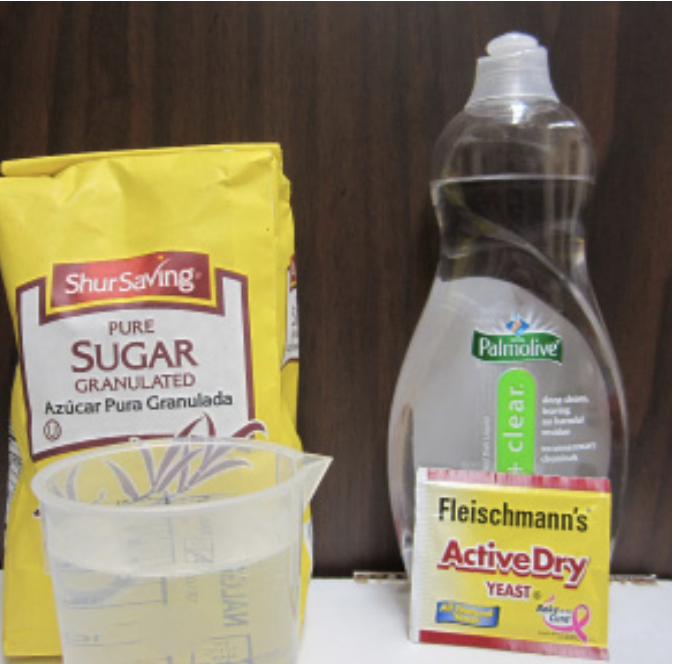
Fig. 7 Ingredients for SWD lure.
Step 3: Hang Trap
Choose a shady spot in the middle of the tree canopy to hang the trap (Fig. 3). For low growing fruits or vegetables, you may need to hang the trap from a metal stake (e.g., raspberries) or sink the trap a few inches into the ground (e.g., strawberries).
Step 4: Change Lure Weekly
It is important that you do not spill lure in the area that you are trapping. Place 2” of fresh lure into a clean container and simply swap the old container and lure for the clean container and lure, while leaving the lid and rain guard hanging in the tree. Cover the old container and take it to an area where you can screen the contents for SWD.
Step 5: Check old lure for SWD
To screen the old lure for SWD you will need a fine mesh strainer, a hand lens or magnifying glass, a bowl of water, forceps, a sink or waste container, and a good lighting source (Fig. 8).
- Pour contents of trap through the strainer (Fig. 9). If the sample contains a lot of insects, you will need to screen it in small batches, so only pour a small portion of the insects into the strainer at a time.
- Slowly lower the strainer into a bowl with clean water. This will cause the insects to float (Fig. 10). If some of the insects do not float, slowly lift the strainer out of the water, then slowly lower it again.
- Use a hand lens or magnifying glass to examine the floating insects (Fig. 11). Remember that you are looking for vinegar flies. They will be about 2-3 mm (0.08-0.12 in) in length, with red eyes. Male SWD will have a spot on each wing (Fig. 1), and female SWD will have a serrated ovipositor (Fig. 2).
- If you need to get a closer look at a fly, use forceps to remove it and place it in a different dish (Fig. 12).
- If you suspect that you have found a spotted wing drosophila, and you need verification, you may send it to the UPPDL. Instructions for submitting samples can be found on the Utah Pests website.
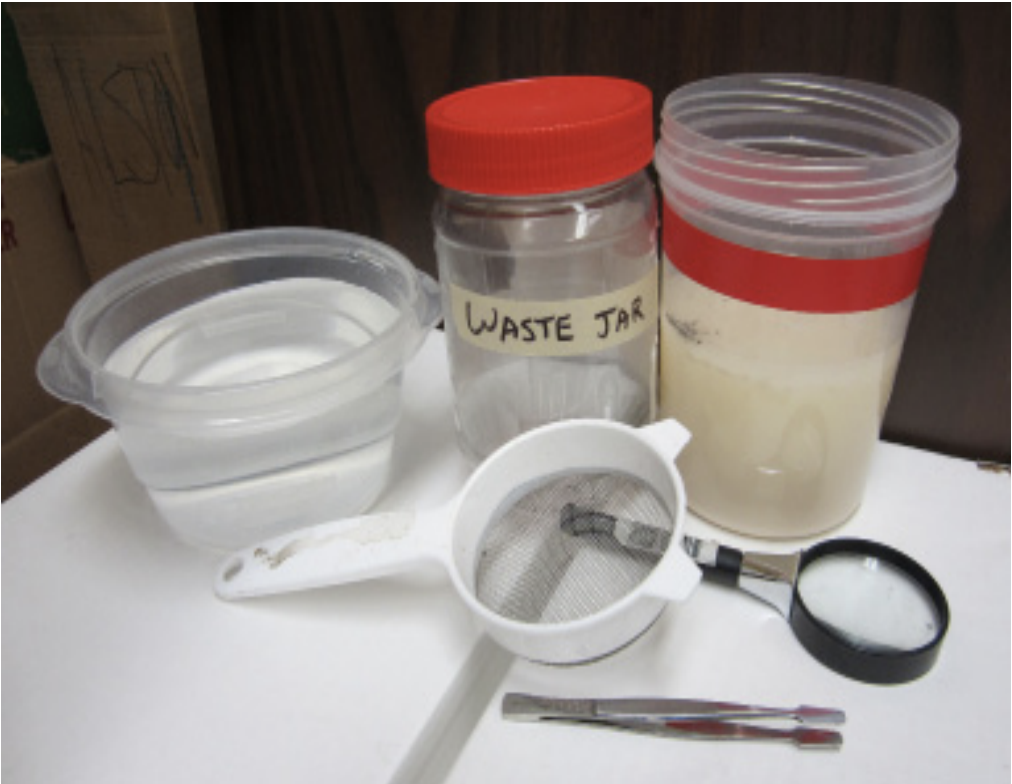
Fig. 8 Items needed to screen for SWD.
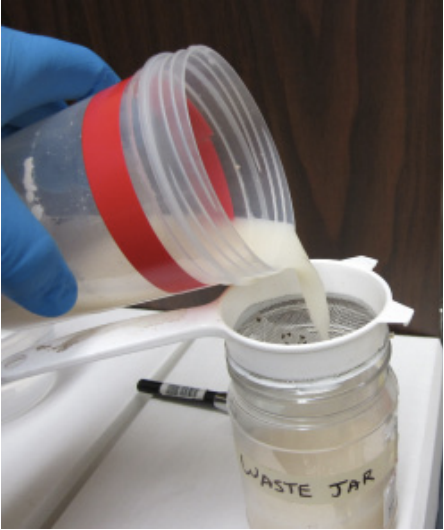
Fig. 9 Straining trap contents.

Fig. 10 Liquid bait is poured through a fine mesh strainer and dipped in fresh water to visualize insects.

Fig. 11 Use a magnifying glass to examine floating insects.
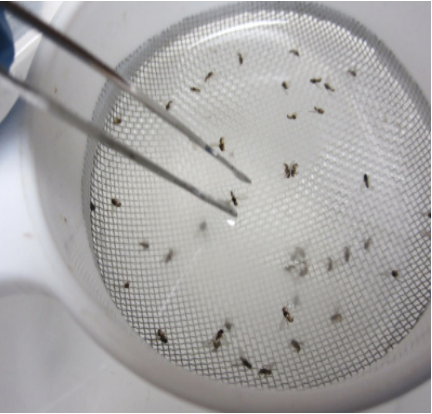
Fig. 12 Use forceps to move insects to a dish for closer examination.
Additional Resources
- Davis, R., D. Alston, and C. Vorel. 2010. Spotted wing drosophila. Utah Plant Pest Diagnostic Laboratory, Utah State University, fact sheet no. ENT-140-10.
- Invasive Fruit Pest Guide for Utah
- Spotted Wing Drosophila Fact Sheet, Utah State University Extension.
- Stanley, C. 2011. Trapping and Identifying Spotted Wing Drosophila. Utah Plant Pest Diagnostic Laboratory, Utah State University, video fact sheet, http://www.youtube.com/watch?v=jyH_17ze3cU&feature=player_embedded.
- Spotted wing drosophila, Oregon State University Horticulture and Crop & Soil Science.



